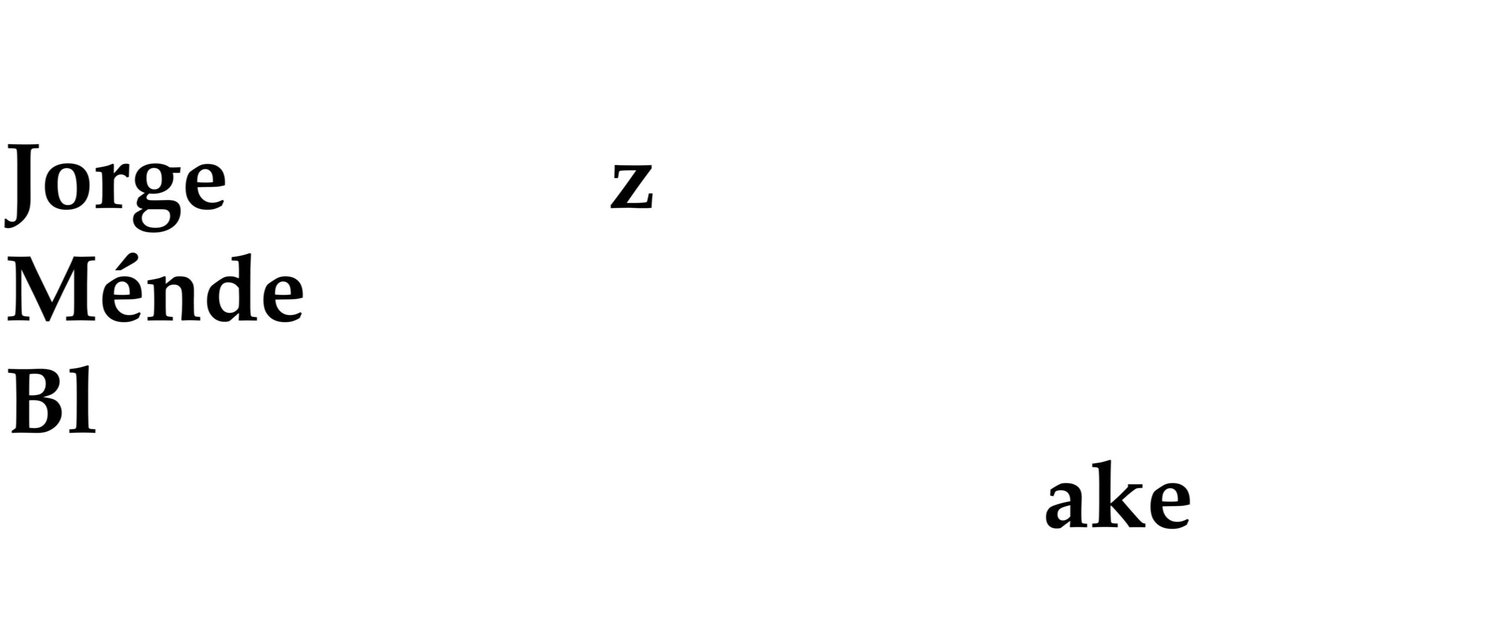For English Scroll Down
Querido James
Querido James es una meditación sobre la escritura y específicamente sobre James Joyce que reúne diferentes obras y medios, todos los cuales abarcan el universo de Méndez Blake: bibliotecas, libros, poesía y arquitectura. El título toma su nombre de una de las obras de la exposición, una carta ficticia que JMB escribe a James Joyce, en la que el artista habla con Joyce como si fuera un viejo amigo. En su carta, discute su escritura, explica algunas de las piezas de la exposición y medita sobre literatura en general. Fue importante la presencia de James Joyce en Zúrich en la primera mitad del siglo XX, habitando siete edificios diferentes entre 1915 y 1919. Joyce visitó Zúrich antes de y también durante la Segunda Guerra Mundial, y finalmente murió en la ciudad en 1941. Joyce está enterrado junto su familia en el cementerio del Fluntern, al lado del zoológico.
Para la exposición en la galería Mai 36, Méndez Blake enfoca su atención en dos aspectos de la obra de James Joyce que no son muy populares dentro de su trabajo conocido: su poesía y sus libros para niños. El poema Chamber Music fue la primera obra de Joyce, escrita en 1907 cuando tenia 25 años, aunque no fue muy bien recibida por críticos, y escrito quince años antes de que Joyce cambiara el rostro de la literatura con Ulises. Chamber Music posee una cierta musicalidad, y su estructura es particularmente notable. Joyce también escribió dos libros para niños, The Cat and the Devil y Cats of Copenhagen, que no fueron publicados durante su vida, los escribió con brevedad como si fueran postales para su querido nieto, Stephen. El poema de Joyce y los dos libros para niños están presentes en la exposición, traducidos como pinturas, dibujos, caligramas y una pintura mural. Los textos son el enfoque de Méndez Blake, y están mediados por estrategias precisas: cuenta las palabras y mide las letras, también busca formas y estrofas dentro de las paginas del libro. Sin embargo, este proceso obsesivo de producción se equilibra con simples gestos, como escribir pequeños corchetes en una página, señalar una esquina del espacio o la apariencia surrealista de un limón en una obra.
(texto: Jorge Méndez Blake & Andrea Hinteregger De Mayo)
Dear James
